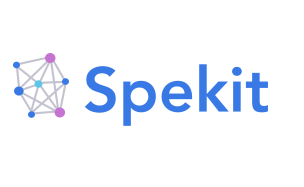ATD Blog
Size Matters: Why You Need to Incorporate Microlearning Into Your L&D Strategy
Wed May 13 2020

The concept of microlearning—presenting learning in small bites (two to four minutes long) with the focus on meeting a specific learning objective—is nothing new. In fact, I’d bet the majority of information you consume outside of work today is in some form of microlearning.
You watch a quick YouTube video to learn how to fix the dishwasher, browse Instagram for recipes, and skim through news headlines to catch up on current events. In our day-to-day, we’re accustomed to getting information when and how we want it, always accessible at our fingertips.
Enter: our professional lives. Here, we sit down for hour-long training courses to learn a new process. New tools are communicated through lengthy docs and manuals. Emails designed to outline crucial business updates are glanced over or slip through the cracks amid the daily chaos.
And still, as trainers, we wonder why we get repetitive questions. Why am I getting a call about a process I’ve already outlined in our learning management system (LMS)? Did they not listen to the training session I just gave? Why isn’t this information sinking in?
The science behind each of those questions is clear and goes back to simple theories about how people are wired to learn.
Our working memory has a limited capacity, known as cognitive load.
According to George Miller's theory, most adult learners can store between five and nine items of information at once in their short-term memory. So, while I may have read the email you sent about a new Salesforce field, odds are it’s forgotten the next day when I go to input the field.
If information isn’t reinforced and processed in our working memory, it’s simply tossed to make room for new information, be it the latest hairstyle trends or how to breed a cat. So, how do we get information into long-term memory so that our team can recall critical training or process changes? Welcome to mircolearning.
There are three science-backed essential components of microlearning to maximize retention: quantity, reinforcement, and context.
Quantity: To be effective, microlearning content must focus on just one or two key objectives about a single question. This improves comprehension because memories aren’t cluttered with additional, often irrelevant, information. Remember, people can only store a few bites of information at a time, so make sure they’re the right bites at the right time.
Reinforcement: Microlearning should be reinforced at every step of the learning journey. Instead of more traditional learning where the trainer sits you down and says, “Here’s what you have to learn now,” with microlearning, the employee chooses when and how to digest the information. They learn at their own pace and the moment a question arises. This improves retention because they can immediately use that information, helping knowledge pass into long-term memory.
Contextual: Bite-sized learning content must be easily accessible so your team can learn wherever they are without leaving their existing workflow. This is crucial. If information is hard to find (no matter what format it’s in) people won’t hunt for it. They should be able to retrieve information as easily at work as they do outside of work. Remove the barrier to knowledge.
Right about now you’re probably thinking, “This all sounds great but it’s too much work.” In truth, it’s too much work NOT to. According to learning architect Ray Jimenez, by creating micro-courses, learning professionals can reduce development costs by 50 percent and increase the speed of development by 300 percent—not to mention the time saved no longer answering repetitive question after question.
And, in today’s new normal of remote work, all of this is more important than ever. Employees must be self-sufficient. They can’t turn to a colleague for answers and time spent waiting for answers is crucial time lost in the day. If you’ve dismissed embracing microlearning before, now is the time to take that leap so your employees are empowered from wherever they’re working.
At Spekit, we did an incredible amount of research on the science of learning before launching our in-app, microlearning platform. We wanted to make it easy for any company, at any size, to surface bite-sized knowledge to employees directly within their day-to-day workflows. In fact, we care so much about this cause that our entire platform is who believes employees should be able to learn the way they want to learn.
Reach out and we’ll walk you through how we’ve helped organizations, from startup to enterprise, adopt microlearning strategies to boost retention and adoption of knowledge.

